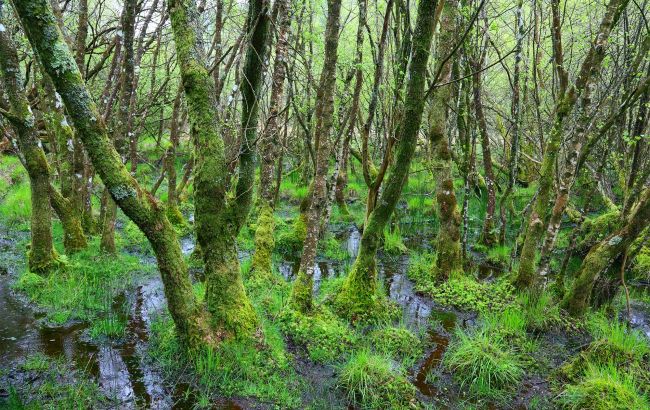Europe restores wetlands to block Russian tanks
 Europe restores wetlands to block Russian tanks (photo: Getty Images)
Europe restores wetlands to block Russian tanks (photo: Getty Images)
EU countries plan to secure their eastern borders from possible Russian invasion by creating a kind of water barrier through wetland restoration, Politico reports.
As the outlet writes, in February 2022, when Russian troops advanced on Kyiv, Ukrainian defense consultant Oleksandr Dmitriev took an unconventional step: he blew up a dam on the Irpin River.
Photos of Russian tanks stuck in the swamp at the time spread around the world. Three years later, this episode inspires countries on NATO's eastern flank to consider restoring their own wetlands, combining two strategic goals that increasingly compete for resources: strengthening defense and fighting climate change.
In Europe, Dmitriev's idea is seen not only as a way to protect borders from a potential Russian attack but also as a contribution to combating global warming. After all, peat bogs capture the carbon dioxide that heats the planet just as well as they drown enemy tanks.
Finland
Finnish politicians have suggested restoring wetlands along the border with Russia, and the Ministries of Defense and Environment are already working on a joint pilot project.
Officials from the Ministry of Environment note that the initiative addresses defense, climate, and nature simultaneously. The proposal has also gained support in parliament, where lawmakers point out that swampy areas on the eastern border could hinder enemy movement and serve as a key element of national defense.
Poland
In Poland, wetland restoration has already been included in the large-scale defense project East Shield, valued at more than 2 billion euros.
The Ministry of Defense indicates that bringing peatlands back and reforesting border areas will both strengthen national security and support the country's climate commitments to the EU. According to the Deputy Minister of Defense, nature itself is viewed as a partner in this effort.
Scientists and activists stress that the approach offers dual benefits, reducing greenhouse gas emissions while creating natural obstacles for enemy equipment.
Baltic states
In the Baltic countries, peatlands make up as much as 10% of the territory, yet no comprehensive restoration plan exists.
In Lithuania, discussions on using wetlands for defense are only just starting. Latvia and Estonia, meanwhile, rely on existing natural barriers in their defense planning but have not launched large-scale restoration initiatives.
Scientists argue that restoring degraded wetlands would be relatively straightforward, requiring only the closure of drainage ditches and the reestablishment of natural water levels.
Germany
At the same time, the use of peatlands for defense does not inspire all countries. In Germany, where more than 90% of peat bogs have been drained, the Bundeswehr has shown no interest in discussing this idea.
Europe prepares for possible war with Russia
After Russia's full-scale invasion of Ukraine, fears of new aggression from the Kremlin have grown in Europe. Countries have begun actively preparing, modernizing their armies and developing defense plans in case of a potential attack.
According to the Chief of the General Staff of the French Armed Forces, General Thierry Burkhard, Russia could become a "real threat" to Europe within five years, given the pace of the aggressor state's rearmament.
Ukrainian President Volodymyr Zelenskyy also suggests that the Russian army may attack a NATO member country within the next five years to test the alliance's strength.
Whether Putin is ready for war with the West and how NATO would respond — read in the material by RBC-Ukraine.

